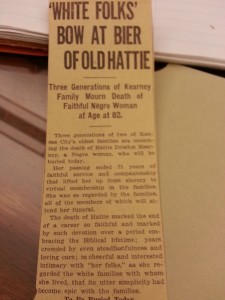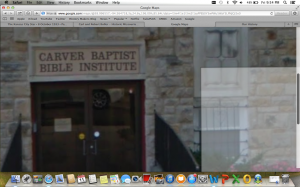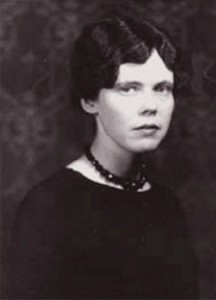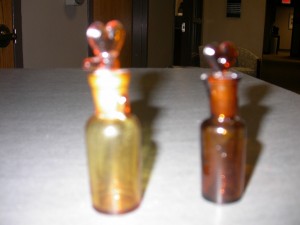By Tony Lawson

.44 caliber lead ball found at the Wornall House archaeological excavation, summer 2013. (Photo by bethanywearsphotography.com)
I had the opportunity to attend a planning meeting for the upcoming museum exhibits at the Wornall House Museum. At the meeting were the director of the Wornall-Majors House museums, the director of Clendening Medical Library, and the CEO of the Metropolitan Medical Society of Greater Kansas City. It was one of the first times in my life that all my reading and research paid off a bit in a professional manner and I could speak as an authority on a historical matter. In this case the topic was death in the Civil War. I was able to relate the following primary and secondary evidence to make a clear and concise case about Victorian notions of death and dying and tie it directly to the historical narrative we are constructing at Wornall House.
Once again in the Wornall House stories and histories, I have found two different versions of a single tale. This one involves 9-year old Frank Wornall and his reminisces of the Battle of Westport. According to Frank’s stories of the Wornall House, at some point a lone wounded Confederate soldier appeared at the back door of the home. The man had been shot through the jaw and it was nearly removed. He could not speak, only make wild gestures with his hands and eyes. Somehow it was communicated to Frank that the man was refused admission at the regimental hospital because he was not a member of the regiment.
Frank had ” the run of the house” to take care of the wounded man and led him to the cistern where he bathed and bandaged the man’s wounds. The man was most grateful and soon recovered enough to be on his way toward home and family where he could be nursed back to health. That’s one version of the story.
The other version of this story begins the same, but ends with young Frank Wornall cradling the wounded soldier in his arms on the families lawn near the cistern. In this version the event occurred as the Battle of Westport was ending and Confederate troops were in retreat from Union troops approaching the Wornall House, which had been converted to a Confederate field hospital. A Confederate cavalry soldier rode up on his horse and looked down at the scene with Frank comforting the wounded soldier on the lawn. The mounted soldier removed his pistol from its holster and shot the wounded man dead.
When Frank asked the soldier why he had shot the wounded man in seeming cold-blood, the soldier replied that it was much better for the man to die in the arms and warm comfort of friends than in the hands of the enemy.
While this version of the story shocks modern sensibilities and conflicts with contemporary morals in its violence, it actually epitomizes Victorian Era notions of the ars moriendi–The Art of Dying. The societies that brought forth the Civil War witnessed death and dying on an unprecedented scale and had to find ways to deal with the unimaginable losses of so many men in the prime of their lives, so very far from their homes. Hospitals were places for indigents and the homeless in which to die; people in good standing with their God, communities and families spent their last hours and died at home surrounded by loved ones recounting the deeds of a life well lived. That was the concept of a good death and the Civil War destroyed it.
Being blown to atoms by modern artillery was nearly incomprehensible to the Victorian Era mindset. Inglorious death from camp diseases cheated would be heroes from their deeds. Dying away from home while surrounded by your enemy or strangers flew in the face of the concept of a good death. That was not cold-blooded murder on the Wornall’s lawn; it was has hot-blooded mercy. That cavalry soldiers lead ball was a gift; the gift of a good death.







